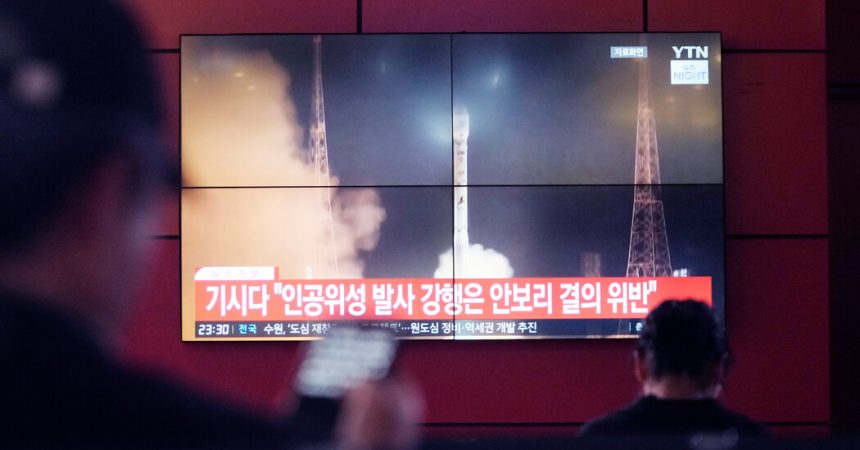North Korea attempted to put a military reconnaissance satellite into orbit on Monday, the South Korean military said, but the rocket carrying the satellite exploded midair shortly after takeoff, marking the country’s third failed attempt to put a spy satellite into orbit.
Kim Jong-un, the leader of North Korea, has made deploying a fleet of spy satellites one of his latest military ambitions. He has also focused on testing what he claimed were nuclear missiles capable of targeting the United States and its allies in the Asia-Pacific region.
North Korea has said it needs satellites to increase its ability to monitor and target its enemies and to make its nuclear deterrence more credible.
After two failed attempts, North Korea placed its first spy satellite into the orbit last November. Mr. Kim has said he would launch three more satellites this year. On Monday, North Korea said it would launch the first of the three before June 4.
Hours later, the South Korean military said it detected a rocket launched from the Tongchang-ri space station in northwestern North Korea. The rocket flew over the sea between the Korean Peninsula and China, following the same southern trajectory North Korea had used in its previous satellite launches.
The South Korean military said the rocket was believed to be carrying a satellite. But it said it considered the launch to be a failure after detecting debris falling over North Korean waters two minutes after liftoff. The rocket was believed to have exploded in midair, the South Korea military added.
North Korea also confirmed that its launch was a failure, with the country’s state-run Korean Central News Agency reporting that its newly developed rocket booster carrying a military reconnaissance satellite had exploded in midair.
The United States, South Korea and Japan have been watching North Korean preparations for a rocket launch for weeks. By Monday, they had Navy ships in waters around the Korean Peninsula to monitor the rocket and collect data, the South Korean military said in a statement.
North Korea is barred by United Nations Security Council resolutions from launching long-range rockets because they use the same technology needed to build intercontinental ballistic missiles.
During such launches, South Korea and Japan usually put their militaries on alert and instruct residents on islands near the rocket’s trajectory to take cover inside buildings or underground for fear of falling debris.
North Korean satellites were once so rudimentary that they could hardly be considered reconnaissance tools, according to South Korean officials.
But more recently, North Korea has received satellite technology, as well as oil and food, from Russia in return for artillery shells and ballistic missiles to aid Moscow’s war effort in Ukraine, according to U.S. and South Korean officials.
Officials from South Korea have said that Russia has also helped North Korea’s nuclear and missile programs in another way: Earlier this year, Moscow used its veto power at the U.N. Security Council to disband a panel of U.N. experts who collected evidence of countries violating sanctions imposed on North Korea.
In recent weeks, Mr. Kim has toured munitions factories, encouraging workers there to boost production. North Korean state media has also shown Mr. Kim visiting large warehouses full of missile-launching vehicles. South Korean analysts said the images were meant to entice President Vladimir V. Putin of Russia to visit North Korea by showing Mr. Putin the weapons he so badly needs.
Common interests led Mr. Kim and Mr. Putin to meet in the Russian Far East last September. Mr. Putin then promised to visit North Korea.
North Korea has bitterly complained in recent weeks about joint military exercises by the United States and South Korea and their “hostile air espionage.” Such activities have “become the root cause of ever-escalating regional military tensions,” Kim Kang Il, the vice defense minister of North Korea, said in a statement on Saturday.






